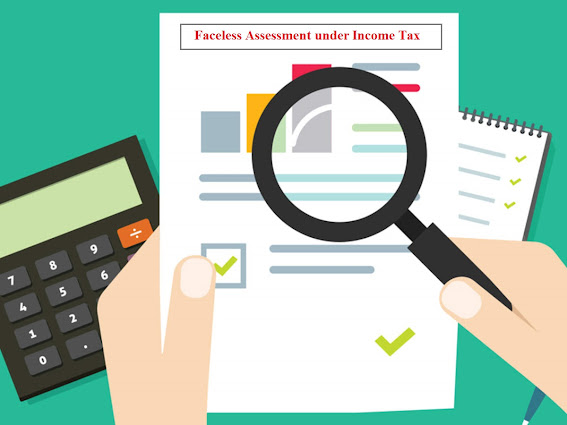Faceless Assessment under Income Tax- A welcome step in Indian Judiciary
One
of the main focus areas of the Modi Government right from inception has been
tax reforms in the country and to make it more transparent.
From Goods and Services Tax (GST) Bill to the technological advancements in the Income Tax Assessment procedures, the government is not leaving a single stone unturned. Every tax reform that has been made is in line with the “Ease of Doing business in India”, Digital India Initiative”, Start-up India project and with an intention to boost the confidence of taxpayers and corporates in Indian tax system.
India
is one the few nations that has adopted this type of system? The new faceless Assessment
scheme has the following features-
Features of
Income Tax Faceless Assessment Scheme
- It has brought an epitome shift in the assessment process by eradicating the human interface and making it paperless.
- Centralized National e-Assessment Centre (NeAc) has been introduced which will be single point of contact between the tax payers and assessing officers for issuance of all the Income Tax notices, communications and smooth conduct of faceless Income Tax Assessment and passing of final income tax assessment order.
- The scrutiny cases are transferred to assessment units through an automated procedure and randomly by computer algorithms.
- The National e-Assessment Centre (NeAC) issues the assessment notice electronically to the taxpayer through their e-filling account. Therefore, the identity of the assessing officer is also not disclosed.
- It follows an approach that is team-based and makes use of technology.
Some Advantages of faceless income tax assessment are as under:
- It provides automation and uniformity to entire procedure of Income Tax assessment.
- Since it involves team of tax officials, its introduction has removed all the unwanted and unnecessary procedures that could lead to subjective judgments and also individual biases.
- The uniformity in the assessment process has helped in achieving a corruption-free, justified and truthful assessment order for the taxpayer.
- It has become time bound
- No physical interaction with the tax officials are required which will reduce the corruption as well as harassment of honest tax payers.
- It
reinforces the trust of tax payers in tax officials and entire tax assessment
procedure.
In
addition to above, a revised Form 26AS has been notified by the Ministry of
Finance, where all the additional details of the financial transactions of
higher value done by a taxpayer during a financial year can be filed. It
contains details like property purchases, any cash deposits and withdrawals
made by the assessee. The Form 26AS will help, in facilitating the required
data to the tax department during the primary phase of the income tax faceless assessment.
The process of the faceless income tax assessment is carried forward in the following way-
- The NeAC which is the central cell serves a notice to the assessee. It is to be specified in the notices as to why their case has been selected for assessment.
- The taxpayer has to provide with a response to the notice served to them within 15 days of receiving the notice through the Income Tax Return e-filing portal.
- Through an automated procedure the assessment case is allocated to one of the assessment centre.
- If there are any prejudicial modifications in the income tax returns of the taxpayer, NeAC provides with an opportunity of being heard to the assessee. The taxpayer can provide suitable documents in support of their explanations before a conclusion is made in the case.
- The taxpayer can also request for a video conferencing facility to put forward their points.
- Once
the faceless income tax assessment is completed, a draft order is issued and
the electronic records are transferred to the Authorized jurisdictional tax
office. All further proceeding regarding any imposed penalty or fine, demand
recovery, prosecution proceedings are to be done by the tax officer.
- Once the proceedings are done, a best judgment assessment order is to be provided to the taxpayer or assessee.
Post Your Ad Here




Comments